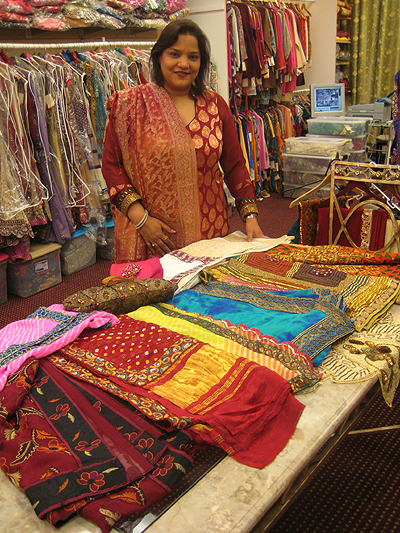|
BY RANI SHARMA

The quintessential dupatta has undergone a radical transformation in recent days. Designers are digging deep into the tradition of different regions of India to design beautiful pieces- each one a masterpiece. Dupattas are, in various regions, called by different names- chunari, odhni or even the plain scarf in English. Each dupatta has fabric and style that is unique to the region.
Bandhni: The popular style of Gujarat and Rajasthan, the traditional bandhni dupatta has been given a new twist with new fabrics and fancy work on the borders. These dupattas can be of silk, chiffon, crepe or chignon.
The ghadchola style of bandhni has checks and is mostly of red fabric. This classic style can be embellished with fine mirror-work. Pair with a simple yellow or red suit to bring out the beauty of the dupatta. A heavier version with heavy golden weave border or embroidered flowers in the body can even be used in bridal wear, paired with a bottle green suit.
The multi-colored leheriya bandhni of Rajasthan is designed in several colors, has a matte finish border, and is paired with a plain suit.
Phulkari: The phulkari tradition of Punjab is high on the trend quotient these days. The dupatta is usually in earthy base tone and is hand woven in baagh work. Pair with a short kameez and patiala salwar in soft material in one of the colors of the dupatta.
Banarasi: Pure crepe dupattas with banarasi weave and four-sided border in different colors make a statement of their own. Pair with a plain suit of kathan or crepe material.
Kolkata chiffon: Five-six different colored chiffon patches are woven together in gold small gota work. The border is of flat zari embroidery and the center has patra work.
Modern: While the possibilities are endless, here we feature two dupattas.
1. Crinkled crepe in tie-and-die with metallic antique work on the borders. Pick one color from the dupatta for the harem pants and another for the shirt.
2. Black plain chiffon with maroon and black resham aari embroidery all over. Pair with black chiffon suit.
Mix-and-match different pants, shirts and capris, depending upon the occasion and the weather outside.
Accessories: Heavy jewelry with at least two dozen bangles on each wrist, embroidered pencil heels, soft clutch. Work on your eyes; donít forget a touch of blush-on and keep the lipstick light.
|



